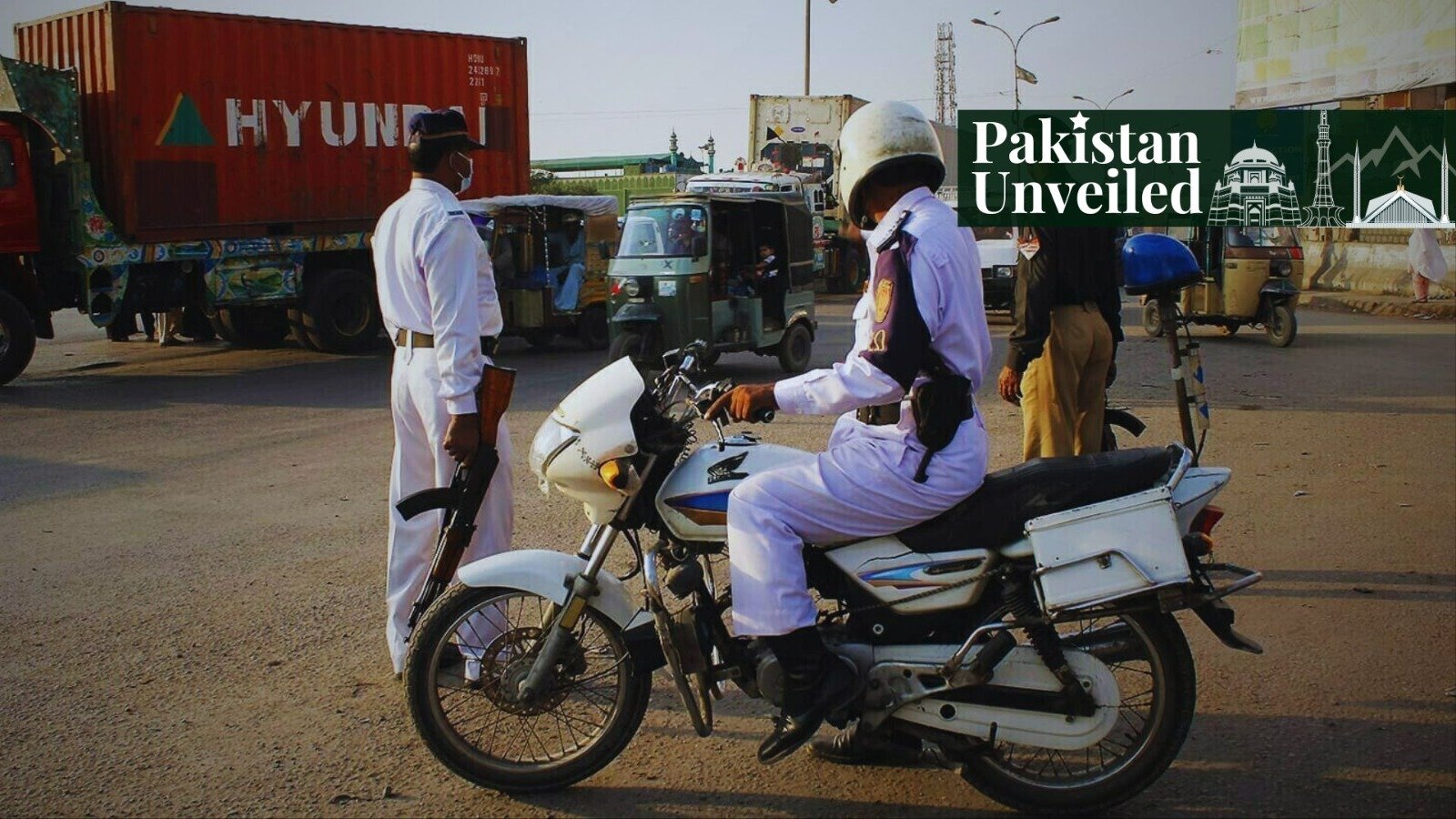Pakistan has consistently been vulnerable to domestic backlash in various sectors, including irrigation, agriculture, infrastructure, and road management. This is because governments have been switching throughout the course of history. The priorities of every political party contradict those of others, resulting in the upgrading of certain sectors while leaving others untouched. This has also resulted in provincial segregation about budget allocation and grassroots upgradation. Sindh province is considered to be lagging in terms of provincial development. However, in the case of Sindh, there has been a single ruling entity—the Pakistan People’s Party. Despite the fact, Sindh is facing serious issues to date, and foremost among them are the road management and traffic violations.
Karachi is considered the epicenter of road accidents and severe traffic issues. Even though the road management and infrastructural development are relatively higher in Karachi than in other cities of Sindh, people have been facing serious issues, including accidental killings on roads. In the past few years, the incidental killings of locals via vehicle accidents have become a common routine there. From children to senior citizens, all have been prone to these accidents. Viewing this situation, the Sindh government has enacted new laws and smart upgrades. These steps would target the mess in our transport network.
Overview of the Provincial Traffic Challenges
- Poor Infrastructure
Sindh’s roads often can’t meet demands. Many are too narrow or in disrepair, causing traffic jams and breakdowns. This situation makes congestion worse in busy areas and slows down connections between towns. Historical underfunding contributes to the problem. Old road designs do not suit the number of cars today. Narrow lanes create close calls between trucks and bikes. The routes from villages to cities require improvement. Trucks transporting crops from Sindh’s fields encounter bumpy roads. This delays fresh produce from getting to stores.
- Traffic Violations
A majority of drivers in Sindh do not know even the basic rules of driving. After taking two days of driving training, they become licensed drivers. These drivers are not aware of traffic laws, i.e., signals, safety measures, etc. Insufficient discipline of this kind often results in collisions, which expose the vulnerable road users to harm. There is a lack of educational programs, enforcement procedures, and public media enlightenment.
- Transport Bulge
The increase in vehicles has created serious hurdles. Every second person in Karachi has at least a motorcycle or a car. This has resulted in overcrowding of roads. Moreover, during heavy rains and floods, some routes become totally unusable. This not only disrupts service but also creates difficulties in public transport routines.
- Weak Law Enforcement
According to official statistical data, by the year 2025, there will be at least 546 victims of vehicular accidents, with 8,136 victims being injured. Trailers are the deadliest among the heavy vehicles, and they claim 62 lives. This is then followed by water tankers that accounted for 37 fatalities, dumpers 32, and buses 20. The stratification of this type reveals the distinction of risk profiles of certain types of vehicles, which should be subject to targeted regulatory and engineering measures.
- Illegal Parking and Encroachment
One of the reasons behind Sindh’s overcrowded traffic is the illegal occupation of roads by shopkeepers, malls, and other vendors. They occupy the space where vehicles can easily be driven. Similarly, the illegal parking also adds its part. This really narrows down the usable width of the road, making it tough for everyone. Also, various distortions due to construction or stalled infrastructure projects worsen congestion.
Overhaul of the Traffic Laws
The Sindh government has announced new traffic regulations and various amendments. The governor said these laws aim to improve road safety and lower traffic accidents. Here are the key decisions announced:
- Courts specifically designed to handle traffic infractions will be established.
- A province-wide operation will target official vehicles that violate traffic laws.
- Government vehicle offenses will result in double fines.
- To improve enforcement and monitoring, an electronic challan and surveillance camera system will be implemented.
- All commercial vehicles must now have current fitness certifications; failure to do so will result in a fine of Rs. 10,000.
Driving Restrictions
The vehicles that are older than 20-25 years will be banned. Poor-quality loaders and rickshaws will be banned. Certified pre-licensing education. The heavy-trailer vehicle (HTV) drivers must have at least thirty hours of certified pre-licensing education by an authorized institution. As long as an applicant possesses one year of light-truck vehicle (LTV) experience, the minimum age to be granted an HTV license is twenty-two years, as opposed to twenty-four years.
| Speed Limit Fines | |
| Motorcyclists | Rs. 5000 |
| Car and Jeep | Rs. 10,000 |
| Light Transport Vehicle | Rs. 15,000 |
| Heavy Transport Vehicle | Rs. 20,000 |
| License Restrictions | |
| Car Drivers | Rs. 20,000 |
| Light Transport Vehicles | Rs. 25,000 |
| Heavy Transport Vehicles | Rs. 30,000 |
The government, in addition, has put into effect much harsher punishments for unlawful parking throughout the entire province. Specifically emphasized among these offenses is parking a motorcycle more than 0.5 meters away from the parking it on a sidewalk, which will lead to a monetary penalty of Rs. 2,000 in addition to a 2-point reduction.
Motor Vehicles Amendment Bill
The MVA bill is assented to by the Governor of Sindh, thus making it enforceable immediately in line with Article 116. This law provides stricter punitive actions against breaches of the Motor Vehicles Act and stipulates new eligibility requirements to grant licenses to large motor vehicles. Some of the prescribed changes include the required completion of a training program before licensure of applicants for light and heavy transport vehicle licenses. Furthermore, a points-based system that punishes poor driving behaviors has been established, and this is meant to increase the observance of road rules.
Conclusion
Sindh’s new traffic rules are definitely a step in the right direction. They could really help make our roads safer, cut down on all that traffic mess, and bring our transport regulations up to date. But the question here is how many fruitful results these changes will produce. Consistent enforcement, public awareness, infrastructural development, free and fair trials, and oversight are some key recommendations to get maximum benefit and reduce the traffic problem up to a certain limit.
If you want to submit your articles and/or research papers, please visit the Submissions page.
To stay updated with the latest jobs, CSS news, internships, scholarships, and current affairs articles, join our Community Forum!
The views and opinions expressed in this article/paper are the author’s own and do not necessarily reflect the editorial position of Paradigm Shift.
He is pursuing a BS in International Relations programme from International Islamic University, Islamabad and has a keen interest in research works, policy analysis, defence and strategic studies and conflict resolution.



